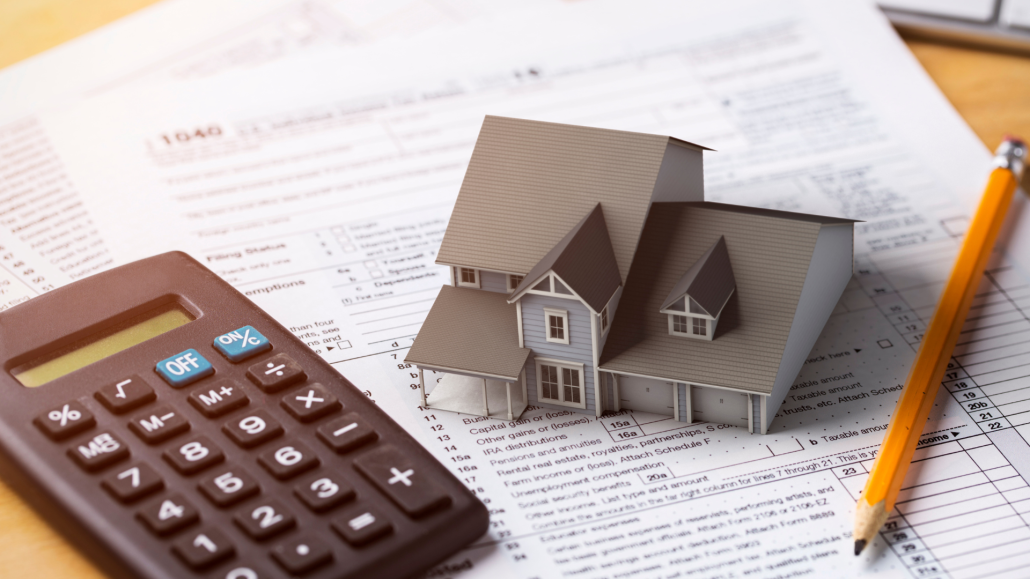So, you’ve got your sights set on a brand-new condominium launch, and you have saved up enough for the downpayment to make the purchase. But, what’s next? In Singapore, BUC refers to private properties, often condominiums, before they receive their Temporary Occupation Permit (TOP). They can be either new launches or projects that are nearing completion. Before making that purchase, you should apply for a home loan and understand the BUC loans in Singapore.
In this article, we’ll delve into what these specialized loans entail, how they work within the context of BUC investments, and the crucial steps to consider when seeking financing for your next home.
Understanding BUC Loans and How They Work

In the property landscape of Singapore, the concept of BUC holds a unique allure. One may ask, why do people choose to purchase BUC properties over resale properties? There are various reasons behind this choice, with the common ones being:
- Improved and contemporary amenities and architectural features.
- Early-bird discounts given by developers
- Generally lower maintenance costs
- Wider selection of units
- More appealing
Before committing to a BUC property purchase, it is crucial to first get a grasp of the workings of BUC loans.
Unlike home loans given for completed properties, where the loan quantum is 100% disbursed at once, BUC loan follows a progressive payment scheme in which a certain percentage of the loan is disbursed at different stages of the property construction. As with all loans, the total purchase price also must be paid first by a certain percentage of cash, followed by CPF, and lastly bank loan.
One notable advantage of BUC loans is the absence of a lock-in period. This feature offers borrowers remarkable flexibility. It means that you can make partial or full payments towards the outstanding loan without incurring additional costs, providing a sense of financial control throughout the property ownership journey.
There are 2 types of BUC loans offered by the banks.
1. Fixed Rate Package
Fixed rate packages offer interest rates that are ‘locked’ and will not change despite changing conditions in the interest rate market. In Singapore, fixed rate loans are only offered for a stipulated period of time.
2. Floating Rate Package
Floating rate packages offer interest rates that will not be fixed for at least, the first 2-3 years. Instead, it will change in accordance with the reference rate that is pegged to the package, in addition to a spread or margin, to form the total loan rate.
- SIBOR-pegged
SIBOR (Singapore Interbank Offered Rate) is a widely used reference rate in Singapore. is an estimate made by a bank regarding the interest rate it would need to pay another bank to borrow Singapore dollars. This rate relies on daily submissions from a group of contributor banks and may not always be supported by actual transactions. (source)
- SOR-pegged
SOR (Swap Offer Rate) is another reference rate used in Singapore. is determined by synthetically borrowing Singapore dollars. This involves borrowing US dollars and converting them into Singapore dollars in the foreign exchange market. (source)
- SORA-pegged
SORA (Singapore Overnight Rate Average) is the volume-weighted average rate of borrowing transactions in the unsecured overnight interbank SGD cash market in Singapore between 8am and 6.15pm. (Source)
- Board Rate (Bank’s internal reference) – pegged
- Fixed Deposit Rate (Bank’s fixed deposit rate plus a spread)
Eligibility Criteria and Loan-to-Cost Ratios
Now that you have an initial understanding of BUC loans and their functioning, the next crucial step is to assess your loan eligibility. Lenders typically consider factors such as credit score, income stability and the maximum loan quantum offered by the bank. A good credit score and a stable financial position increase your chances of obtaining a BUC loan approval.
As with all other housing bank loans in Singapore, a loan-to-value ratio applies. Loan-to-value ratio for bank loans in Singapore are capped at a maximum of 75% of the property value. For instance, if the purchase price of your prospective property is $1,000,000, the maximum loan amount you can secure from the bank is $750,000. However, it is crucial to note that the loan-to-value ratio is dependent on your existing outstanding mortgages. If you are still servicing a home loan on another property, this ratio will be adjusted to 45% for 1 outstanding mortgage, and 35% for 2 or more outstanding mortgages with minimum cash requisite of 25%.
Managing Progress Payments in BUC Loans
When purchasing a BUC property, the financial process follows a Progressive Payment Scheme (PPS), where payments are made in stages based on the construction progress.
A typical progress payment schedule looks like this:
| Payment Milestones (Completion of) | Amount Payable (% of purchase price) |
| Downpayment (Option to Purchase) | 5% |
| Downpayment (Sales and Purchase Agreement) | 15% |
| Foundation Works | 10% |
| Reinforcement Concrete | 10% |
| Brick Walls | 5% |
| Roofing/Ceiling | 5% |
| Electrical Wiring | 5% |
| Car park, Roads, Drains | 5% |
| Temporary Occupation Permit (TOP) | 25% |
| Certificate of Statutory Completion | 15% |
As with all loans, the order of disbursement for the payment of the total price of your property must be firstly paid by a certain percentage of cash, followed by CPF, and lastly bank loan. Typically, you will need to pay 5% of Option to Purchase fee in cash and the remaining 15% down payment by cash or CPF when you sign the Sales and Purchase Agreement. Once you have completed that, the loan disbursement from the bank will then begin.
The bank disburses the loan amount progressively based on each property’s construction completion stages. This means that your monthly repayments will be calculated based on the payments made up till the completed steps. Do note that repayment of the loan and its interest rates only commences upon the first disbursement.
Here’s the catch. CPF disburses your funds for property purchases only when you get your BUC loan approved. Be sure to plan out your research and apply for a BUC loan ahead of time. As soon as you have decided to make a purchase of your BUC home.
Key Considerations and Challenges When Financing Construction Projects

There are some key considerations and potential risks to take note of when purchasing a BUC property. For one, developers may delay or even abandon the project if it does not meet specific sales quotas. Additionally, the showrooms, while enticing, might not entirely mirror the finished units. The true appearance and quality of your property will only become certain upon project completion. Another point to reckon with is the unpredictability of rental income. With no historical data to rely on, estimating rental returns for a BUC property can be a more uncertain endeavor.
It is also important to understand the progressive payment scheme of BUC properties. Always ensure that it aligns with your financial capabilities.
Buyers of BUC properties are also entitled to a valuable benefit – a free conversion. This means you can switch between loan packages without any extra costs. The flexibility of this conversion can vary. Some banks permit it at any stage of the loan disbursement. While others limit it to within three months after obtaining the Temporary Occupation Permit (TOP).
Conclusion
As you step into the world of BUC properties and their unique financing through various stages of the BUC loan, remember the value of planning ahead. Exploring your options, understanding the financial intricacies, and considering your lifestyle aspirations are all pivotal steps in making an informed decision on your property purchase. Whether you’re a seasoned investor or a first-time homeowner, the key to a successful BUC property journey lies in thorough preparation. Plan ahead, seek expert advice, and your BUC property adventure awaits!
Want to find the best mortgage rate in town? Check out our free comparison service to learn more!
Read more of our posts below!

